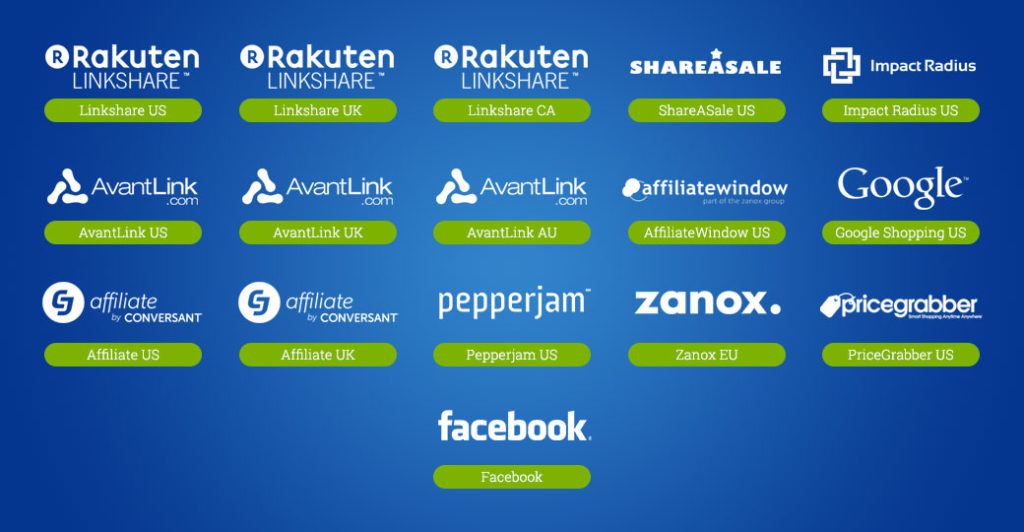For 7 years we have been developing our own reporting, CRM and task management tool we call Chloe. For those “24” fans, you’ll recognize where we got the name. It’s been a fun, exciting, frustrating and invigorating project. Our team has been using this to manage affiliate programs for years. And from time to time we develop one off software projects that are available to anyone who may be in need of one.
The Chloe Feed Assembler is just one of those projects and it’s been available at www.chloeassembler.com for some time. Somehow I didn’t update ya’ll here on the JEB blog. The Feed Assembler was born out of necessity. One of the most common struggles we have in growing our clients marketing campaigns and the traffic to their site lies in the area of their in-house technical resources. Some struggle for months to get a pixel integration in the IT team’s pipeline. So it is even more difficult at times to get their time and attention directed towards datafeeds. Affiliate product datafeeds as well as feeds for paid search, Facebook and more. It always seemed to take months, years, or even never, to happen, when we have to work our project in amongst and entire company’s list of priority 1 projects. And we get that, it can be very hard to work something like that in. Usually the tech team doesn’t have a good understanding of what is needed and why, and thus the creation of a product datafeed for an affiliate program gets dropped to the bottom forever.
Our First Shot at a Solution
The Feed Assembler was born out of necessity.
So at first we engaged several of our developers to work directly with our clients, get access to their back end databases and build the feed themselves. I thought this would be a wonderful idea. It didn’t happen all at once. Looking back I laugh at my naivety. No e-commerce client wants to provide access to their core to an outside company, especially one that is a service company, not a tech company. So, this didn’t work.
But how would we get our datafeeds created then? Clients aren’t able to get this done and they won’t let us do it….
Then I thought, wait, all the data is on their site. How can we just grab it? It took about 5 days but the feature requirements for a new tool, one that wouldn’t require IT resources for our clients and would be easy to use was born.
About 3 months later we had a pretty cool tool up and working. The Chloe Feed Assembler crawls our clients’ sites, grabs all the product information you need for a datafeed, cleans it, and assembles it in our database. We were also able to add functionality that allowed us to aggregate and concatenate data for categories of data that weren’t readily available on the site – things like short descriptions, long descriptions etc. So we can customize and edit the data in there. You can add verbiage to each and every bit of content in that feed. That goes a long way to optimizing it.
Getting the data was one thing, how do we get it to the networks? It wasn’t entirely easy, but it was a straightforward process. We integrated all affiliate networks and other platforms, into the system so you can output a feed in those required formats. Why is this important, well, getting the data is one thing, but getting it into the proper network format is another. You’d think we’d all be using one simple format, but believe me that has never been the case. Your Google Product feed won’t work for your affiliate network, most networks anyway and your affiliate feed won’t work with your Google or Facebook feed. Feed Assembler provides feeds in all those formats. Example:

Another problem we wanted to solve was one of convenience, or better put, I don’t want to have to do anything with the feed, from creation to network, from site to platform. I just wanted it to crawl the site, clean the data, assemble the feed in the appropriate format and get it uploaded to the network or platform. Then just let me know if there were any problems along the way. How many things were changed or deleted and how many updated. That is all I want. And I’ve heard I’m not the only one.
So, we added that too. From site to platform, you and your tech team are not needed to create a datafeed. In 9 out of 10 cases, you don’t even need to notify your tech team that this is happening. Occasionally we hit a few limits on sites to protect the site, but it’s rare.
Along the way, we solved a few huge problems. Many sites have product attributes within javascript. There simply isn’t anything to crawl, those attributes aren’t on the site. So we created a javascript engine within the crawler that runs the javascript to gather that info. So pretty much any website out there we can get lots of that info and in the right format.
So pretty much any website out there we can get lots of that info and in the right format.
Here is what it comes down to: No IT resources. No access to your secure databases. No politics in getting your project done. And no need to buy your development team good beer to get your project done. It’s just done.
I’ve had to buy pizza, beer and more to get projects done. I’m not ashamed of that and at times condone the action. Do what ya gotta do. But you don’t have to do that anymore for a product feed. We’ve got that covered.
If you are interested, contact sales@jebcommerce.com and tell them Jamie sent ya for 50% off your integration fee. We’ll have a datafeed within 48 hours for you in your network/platform. And if you don’t see the platform listed email me, jamie AT jebcommerce dot com and I’ll get that set up for you.


